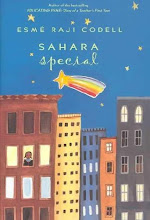Hi, everybody!

Thank you so much for stopping by this new blog for elementary educators who want to gear up, cheer up and change the world. I'm the author of
Educating Esmé: Diary of a Teacher's First Year. This blog is my way of celebrating the diary's reissue this fall, and saying a small "thank you" to all the wonderful, hard-working people who read it. Student teachers, new teachers, veterans and retirees...my community has broadened as a result of the book, and I hope that through this blog, yours can, too. The purpose of this blog is for new teacher support and all-teacher camaraderie, not for personal Q&A (my favorite color is orange), flaming or flattering my books (
Goodreads at your service), or any lengthy academic diatribes (unless we feel like it). I know teachers are short on time, so I hope this work-in-progress will be a quick stop for ideas, support, inspiration, links, how-to's, smiles, recommendations, teacher friendship and a place where you can feel free to comment and say, "hey! I did a great job today!"

I do want to use this first entry to answer two of the most common questions I receive. "So what have you been up to since the diary came out? Did you quit teaching?" Even though the book ends after my second year of working with the Chicago Public Schools, I worked for several years in the schools after that. When
Educating Esmé came out, I resigned my position in order to work on other projects and realize other dreams, including
national advocacy for literature-based learning and read-aloud. I spent a joyful year homeschooling my son,
taught full-time at a private, progressive school, wrote
several novels for preteen readers and
a guide to children's literature, and started the
PlanetEsme Bookroom, an independent venture in Chicago in which I opened a storefront salon and resource collection of about twelve thousand children's books and offered free programming for my community. During this time, I also started
The PlanetEsme Plan, a blog that recommends the best brand spanking new children's books, and some oldies but goodies as well...I hope you'll check it out, back-to-school books are posted now! Currently, I am in graduate school for library science, and then I will continue my work in education, teacher support and the world of children's books. Vive la lifelong learning!
The second, more important question I am asked is, "do you have any advice for first year teachers?" The answer is "sure!" I have compiled twenty-five of my very best, most pragmatic hints in the new edition of
Educating Esmé (as well as a handy-dandy new teacher shopping checklist), and we will be discussing many of my suggestions here on this blog in the coming weeks, so I hope you'll revisit the book with the new material and contribute to the conversation. Speaking of weeks, every week for the next several of them, I will be giving away a free copy of the big honking resource
How To Get Your Child to Love Reading to someone who comments on this blog (chosen at random). For starters, I put the question to you: what is the best piece of advice
you have for a new teacher, or that you have received? Pros, please share your expertise! Newbies, even if you haven't been in the trenches, bequeath the best advice you've gotten so far, or what you wish you could have told someone else! Homeschoolers, please contribute your unique insight!
And before signing off, may I please share three links of special interest?
- Teachers.net, a major, mega, teacher-centered cyber-metropolis that offers chatboards, job postings, lesson plans, on-line mentorship and more. Every first year teacher needs this bookmarked!
- Ellen Moir's Phases of First-Year Teaching. Fasten your seat belt...but know you are not alone.
- My abridged diary on audio, free for your listening pleasure. Produced by Jay Allison with Christina Egloff for their "Life Stories" series and Chicago Public Radio.








































